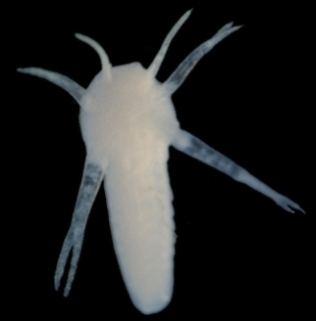Scientific name Remipedia | Higher classification Crustacean Rank Class | |
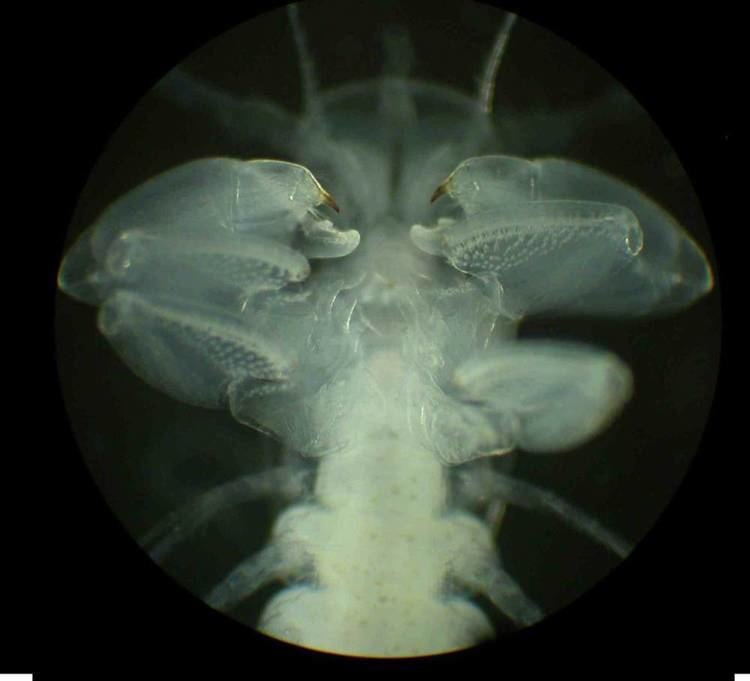 | ||
Similar Cephalocarida, Crustacean, Arthropod, Maxillopoda, Branchiopoda | ||
Remipedia is a class of blind crustaceans found in coastal aquifers which contain saline groundwater, with populations identified in almost every ocean basin so far explored, including in Australia, the Caribbean Sea, and the Atlantic Ocean. The first described remipede was the fossil Tesnusocaris goldichi (Lower Pennsylvanian), but, since 1979, at least seventeen living species have been identified with global distribution throughout the neo-tropical zone.
Contents
- Description
- Classification
- Godzilliidae
- Micropacteridae
- Speleonectidae
- Distribution of extant Remipedia
- References
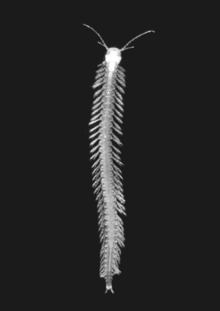
Genetic studies have implied that remipedes are the crustaceans most closely related to insects, so much so that they and insects may be considered a "sister group" to all other crustacea.
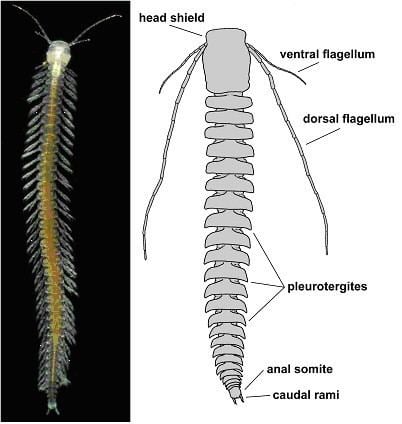
Description
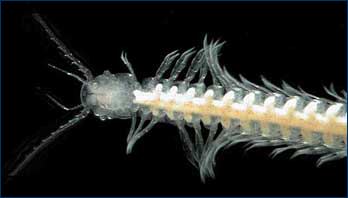
Remipedes are 10–40 millimetres (0.4–1.6 in) long and comprise a head and an elongate trunk of up to forty-two similar body segments. The swimming appendages are lateral on each segment, and the animals swim on their backs. They are generally slow-moving. They have fangs connected to secretory glands, which inject a combination of digestive enzymes and venom into their prey. They have a generally primitive body plan in crustacean terms, and have been thought to be a basal, ancestral crustacean group. However, Fanenbruck et al. showed that at least one species, Godzilliognomus frondosus, has a highly organized and well-differentiated brain, with a particularly large olfactory area which is a common feature for species that live in dark environments.
Classification
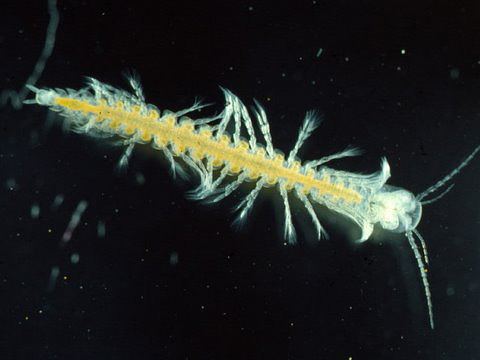
The class Remipedia was erected in 1981 by Jill Yager, in describing Speleonectes lucayensis from the Bahamas. The name "Remipedia" is from the Latin remipedes, meaning "oar-footed". Remipedia is grouped together with Cephalocarida to form the clade Xenocarida. Besides Cephalocarida, the closest relatives of remipedes are probably the Hexapoda (insects and allies), supporting the Pancrustacea hypothesis and the paraphyly of Crustacea.
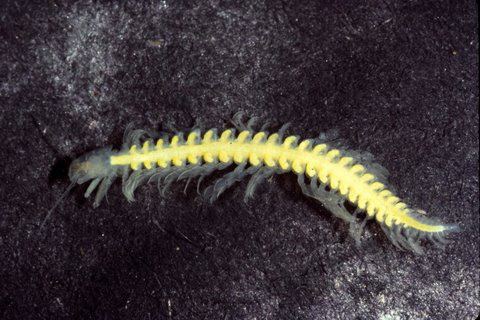
Thirty extant species are recognised as of early 2016, divided among seven families and one genus. All are placed in the order Nectiopoda; the second order, Enantiopoda, comprises the fossil species Tesnusocaris goldichi and Cryptocaris hootchi.
Godzilliidae
